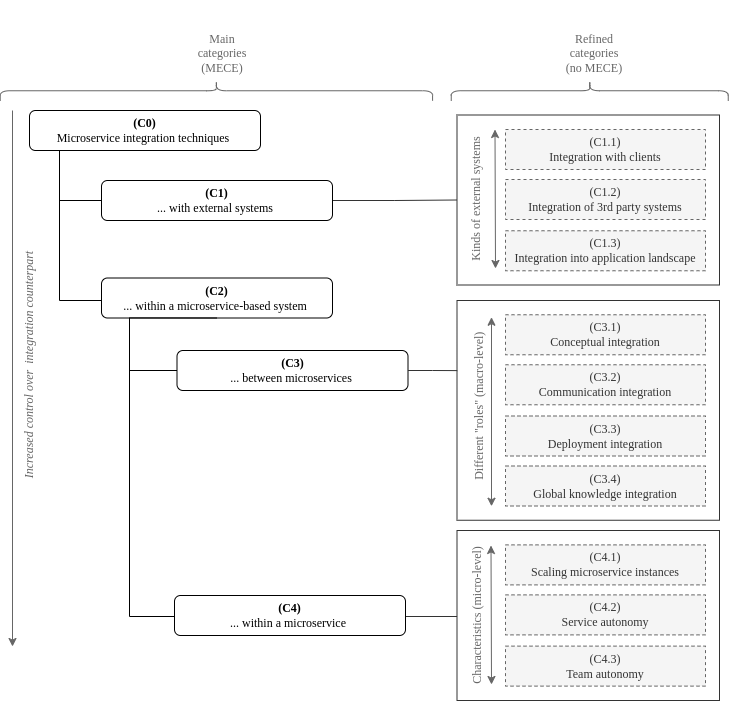Introduction
Context
This web application serves the supplementary materials of the study "A Classification System of Microservice Integration Techniques". This includes:
- The techniques in the classification system (see overview below, classification system in the navigation bar)
- The literature selection process (download here)
- The selected literature (view here)
- The interview guide (download here)
- The code system exports (download here)
- The alternative classification by technique types, see discussion section (download here)
Classification System
We present a hierarchical classification system that expresses the diversity of integration aspects covered by microservices and their interrelations. Following our definition of integration, we define an integration technique as an abstract and reusable solution to a recurring integration problem in the microservice domain, similar to a best practice. These techniques may involve architectural, technical, operational, organizational, cultural, economic, procedural, or cross-contextual implementation. We have categorized these techniques into different categories for easier comprehension.
A classification system aims to structure a domain based on defined criteria. It groups objects into categories based on common characteristics. Categories can further be grouped into higher-level categories resulting in a hierarchy of categories.

The figure presents the classification system of microservice integration techniques. The upper part of the figure shows the main categories as a tree with relations between higher-level parent nodes and lower-level child nodes expressing a specialization relationship. Child categories of a parent are mutually exclusive (ME), meaning an integration technique can only be categorized as one of the child categories. Child categories are completely exhaustive (CE), meaning every technique is assignable to at least one of the child categories. Combining both characteristics (MECE) implies that each integration technique is classifiable by exactly one leaf main category (a category without child categories). We can apply a top-down process to classify a concrete integration technique.
Inside each main category, we further present refined categories of techniques. We cannot claim complete exhaustiveness and mutual exclusiveness for those refined categories as undiscovered or new techniques could exist that do not fit in one of these categories. Still, the refined categories introduce a particular structure for the integration techniques that we do not want to withhold from the reader. Each technique is classifiable as none, one, or more refined categories within its main category.